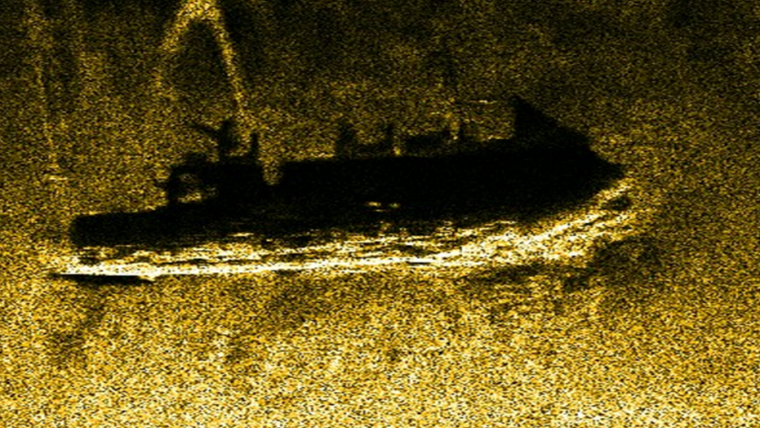Discovering the WWII secrets of the Black Sea
Sidescan sonar for underwater object detection
The mysterious Black Sea has many secrets yet to be discovered. This research presents the results of the biggest UXO survey project performed on the Romanian Black Sea coast after World War II, using towed sidescan sonar technology and oceanographic observations. The survey was carried out between 2015 and 2018 by the Romanian Navy’s hydrographic ship Commander Alexandru Cătuneanu and the Romanian Maritime Hydrographic Directorate. Most of the objects discovered were found to be sinkers, wreck debris or parts of chains, which do not represent a danger to navigation.
WWII and the Black Sea
The assessment was based on the archival research carried out by the Romanian Mine Warfare Data Centre (MWDC) at the Historical Service of the Army in Bucharest. As many as 112 files from the Romanian Royal Navy Command archive, the Sea Division and the Modern Romanian Navy Command were studied, related to mining/demining activities, naval combat actions and anti-submarine combat in the western Black Sea during World War II. Moreover, the Notices for Navigators from 1952 to 2011 were examined, extracting data referring to submarine obstacles, wrecks, pipelines and other contacts.
More than 20 minefields were installed during World War II along the current Romanian coast, totalling approximately 3,000 sea mines of various types (UMA, UMB, VICKERS, EMC I, EMC II, FMB, UC, etc.), plus more than 3,000 protection mines and anti-sweep devices, generally known as unexploded ordnance (UXO). The Romanian and German forces launched these minefields using specialized ships. During the same period, an unknown number of magnetic minefields were launched along the Romanian coast by Soviet forces. Between 1946 and 1948, Soviet forces also carried out the first dredging operations, and a considerable number of mines were neutralized by dredging or shooting. Between 1946 and 1960, the documents studied so far show that approximately 600 mines and 300 protection buoys were destroyed by dredging, shooting or blasting.
A significant number of contacts and debris from the historical minefields still lie on the Romanian Black Sea seafloor, posing a potential environmental threat and a danger to the fishery sector.
UXO survey in the Black Sea
The sidescan sonar is known to be a valuable tool in Maritime Mine Counter Measures (MMCM) surveys, due to its ability to provide an accurate acoustic image of the seafloor and contacts above it. For this survey, an EdgeTech 4200 multi-pulse (MP) sidescan sonar was used.
To achieve a higher swath width, the sonar’s lower frequency (300kHz), in MP configuration, was chosen for this UXO survey. The higher 900kHz frequency provides a higher pixel resolution, and therefore greater detail of the acoustic picture, and was used for wreck investigation. The positioning information (latitude, longitude, heading, speed) from the DGNSS sensor was combined with the attitude sensor of the tow fish (pitch, roll) for an accurate location of the sonar echoes on the seabed.
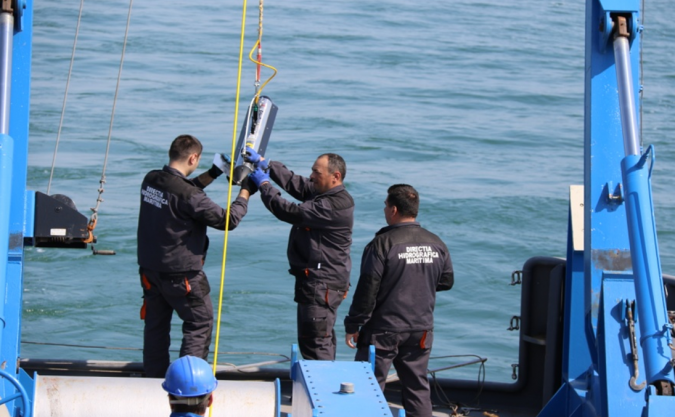
The sonar’s acoustic signals were calibrated at least twice a day using a Valeport sound velocity profiler (SVP) that provided in situ sound velocity profile observations. In the northern part of the surveyed area, more oceanographic stations were needed due to the rapid change in the halocline, a result of the Danube River outflow. Additionally, the ship’s single-beam or multibeam hydrographic sonars were used to complement the survey and detect underwater obstacles that could damage the towed sonar. A comprehensive contact analysis was performed for every survey line to identify and classify the mine-like echoes from the sonar into a mine-like contact. Mine-like contacts are selected by assessing their sonar echo intensity, shape, size and shadow.
Results and discussion
The survey results and analysis allowed the detection and classification of more than 2,000 contacts using the sidescan sonar processed images.
Most of the contacts are mine sinkers (anchors of naval moored mines, debris from the naval mines or parts from the wrecks near these locations).

However, a few contacts were observed and classified as real naval mines from World War II. Once a submerged object is identified as a sea mine, the district is closed to navigation by the Maritime Hydrographic Directorate issuing a navigator’s notice, and the Romanian Navy’s Explosives Ordnance Disposal (EOD) divers begin neutralization operations.
During this survey mission, the positions of some known wrecks were reconfirmed, but new wrecks and wreck debris were also discovered.
The northwestern part of the Black Sea has many particularities that impact any survey activities using sound energy: different types of seabed features, a distinctive water column structure and rapidly changing surface water parameters. The unique water column characteristics of the northwestern Black Sea area (the low salinity and the low presence of oxygen (an anoxic layer)) mean that the metallic contacts have been well preserved. They are therefore in a good state, considering the marine environmental conditions in the area and the time elapsed since their launch in the water.
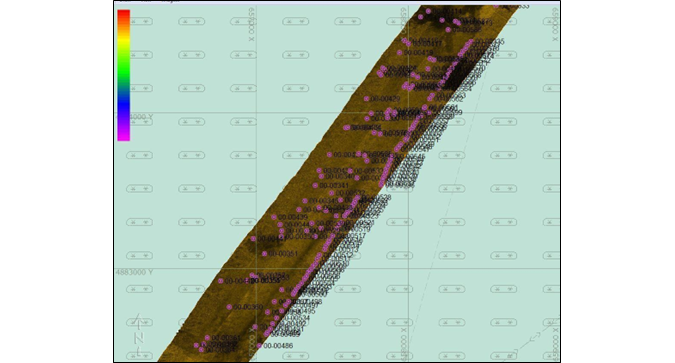
The topography and nature of the seabed can create false echoes/contacts, therefore considerably increasing the detection and classification time of objects; a seabed with rock formations can easily hide metallic objects in their shadow. Moreover, the type of seabed influences the acoustic impulse sent by the sidescan sonar: higher-frequency sound is reflected more efficiently by a rocky seabed, while fine silt and clay absorb lower-frequency sound. However, it was observed that muddy areas with shells embedded reflected more sound energy than pure sandy regions. The type of seabed therefore significantly influences the process of marking and classifying targets, especially in the case of small and partially buried contacts. A comparison of the images using two different sonar frequencies showed the advantages and disadvantages of each frequency: the low frequency can provide a broader range, in deeper waters, and faster surveys, while the higher frequency provides more resolution in shallower areas, but with less area coverage. It is therefore recommended to conduct the initial survey using the low frequency of the sidescan sonar, and after that to perform a high detail survey on contacts of interest (wrecks, mine-like contacts, etc.).
Historical documents revealed that not all naval mines were deployed correctly. Thus, some UXOs had drifted with the underwater and surface currents, following the thermohaline circulation process of the Black Sea generated by density gradients. Mathematical models of the waves and surface currents in the Black Sea may bring operational value to the Romanian Navy by providing circulation predictions that have a considerable impact on the Romanian Navy operations.
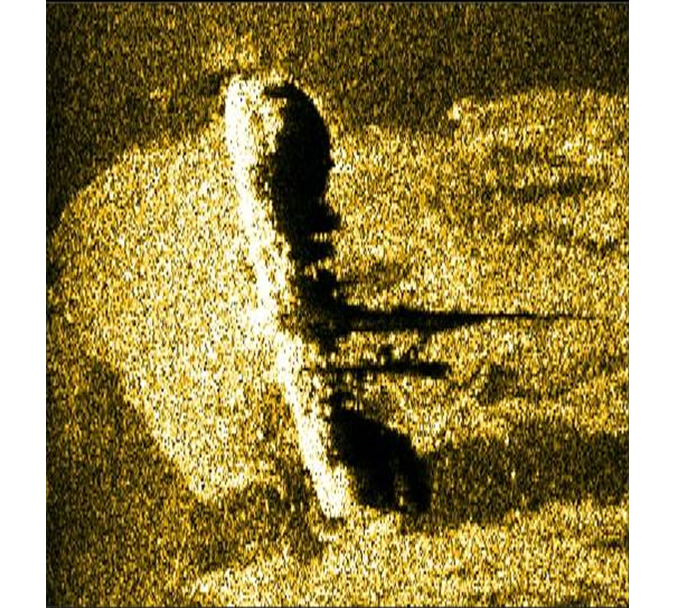
Conclusions
A significant number of underwater contacts were discovered on the seafloor along the Romanian Black Sea coast using sidescan sonar technology: naval mine anchors, metallic fragments of naval mines, wrecks and debris and UXO. While historical UXO presents a threat to navigation due to the explosive charge, the risk of a naval incident caused by hitting a UXO is low. The WWII wrecks and UXO identified during this survey can however pose an environmental threat if chemical substances leak from the munitions. More research is required, such as an extensive biochemical sampling campaign and a solid policy framework needs to be developed.
Following this study, the next step in target classification is identification based on intrinsic physical features of the objects rather than external features such as location and orientation. Furthermore, library matching techniques to determine the similarity between the existing database and unknown sources will become a powerful tool for classifying UXO vs. non-hazardous objects and, in some instances, identifying the UXO type. The project is still undergoing, as a considerable number of underwater contacts still need to be identified with the help of divers, ROVs (remotely operated vehicles) or AUVs (autonomous underwater vehicles), and contacts identified as real sea mines need to be neutralized by the Romanian Navy EOD divers.
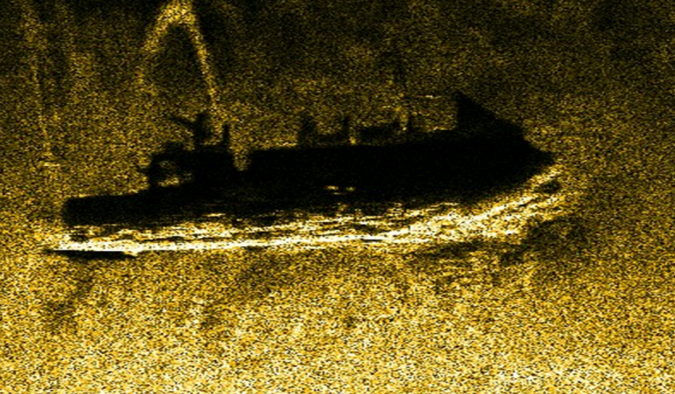
Acknowledgements
The authors would like to thank Navy Captain (ret.) Sorin Grecu, former head of the Romanian Mine Warfare Data Centre and Lieutenant Commander Radian Trufașu, head of the Nautical Cartography branch, from the Romanian Maritime Hydrographic Directorate, for their efforts to gather information from the National Military Archive regarding mine warfare actions along the Romanian Black Sea coast during and after World War II.
The authors would also like to thank Lieutenant Commander Valentin Demente, Lieutenant Nina Camelia Sandu, Lieutenant Fabian Ciubotariu, Lieutenant Leonard Jianu and Petty Officer Marian Simion for their contributions to the collection and processing of the sidescan sonar and oceanographic data. We also thank Navy Captain (ret.) Rogers Casian, former Commanding Officer of the Romanian Hydrographic Ship Commander Alexandru Cătuneanu and all the crew that was present for the long days and nights of surveying.

Value staying current with hydrography?
Stay on the map with our expertly curated newsletters.
We provide educational insights, industry updates, and inspiring stories from the world of hydrography to help you learn, grow, and navigate your field with confidence. Don't miss out - subscribe today and ensure you're always informed, educated, and inspired by the latest in hydrographic technology and research.
Choose your newsletter(s)
